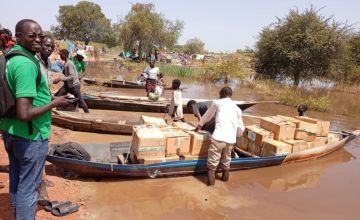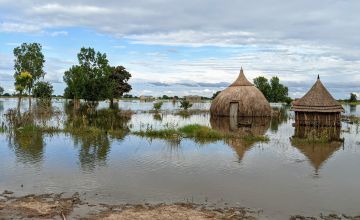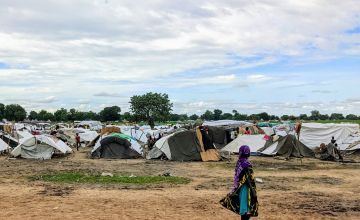
Knowledge Hub
Concern responds to needs of 32,000 left homeless by flooding in South Sudan

Concern teams in South Sudan have launched an enhanced emergency response in the country after hundreds of thousands of people were forced from their homes by the worst floods in almost 60 years.
More than 200,000 people – over a quarter of the local population in Unity State – have been displaced as a result of rising flood waters
Concern’s Country Director in South Sudan, Shumon Sengupta, described the magnitude of the flooding as “immense”.
There has not been flooding on this scale in the region since 1962, according to local records, and despite agencies like Concern working tirelessly to respond to the escalating humanitarian crisis, the needs far exceed the current scale of the humanitarian response.
“Families have been displaced and are sheltering on higher ground, in public buildings or with neighbours or family. Access to basic services including health and nutrition support has been disrupted as clinics have been damaged, submerged in floodwaters, or are inaccessible,” he added.
Without access to basic services and a weakened infrastructure to support those in need of medical assistance, the impact of the flooding could lead to an increase in Hepatitis E, Malaria and diarrhoeal diseases and related malnutrition.
Crops and livelihoods have been destroyed, intensifying the already urgent issue of food insecurity and malnutrition.

Even before the flooding, Unity State had extensive humanitarian needs, with two-thirds of the population facing crisis or emergency levels of acute food insecurity.
“Tension among communities has also increased due to pressure on limited resources and further aggravation of the need for humanitarian assistance,” Shumon Sengupta said.
Concern’s team is responding to meet the needs of 32,000 flood-affected people by:
- Supporting the government and humanitarian partners in the construction and maintenance of dykes surrounding health and nutrition centres
- Continuing the delivery of life-saving nutrition support to malnourished women and children in temporary locations
- Accessing villages that have been cut-off, using canoes to deliver essential medical supplies
- Distributing cash to affected communities to support them in meeting their basic needs
- Distributing shelter and non-food materials including mats, mosquito nets, blankets and cooking utensils; and water and sanitation items including, water purification tablets, plastic sheeting, jerry cans and buckets
- Expanding cash assistance and the delivery of water, sanitation and hygiene items and shelter materials to an additional 19,000 people in need

35-year-old Nyaguande* and her family had to leave their home after flood waters submerged it. Along with elderly relatives, they made a five-day, 83 kilometre trek, wading through waist-high water to reach safety in Bieh, where Concern is providing support to her and other vulnerable families.
When the flooding submerged our home, we lost everything including livestock and farm produce.
“The road to Bieh is all covered with water to waist level (almost 1.5m high) making movement slow and tiring. We had insufficient food because we couldn’t carry enough by ourselves and our children started suffering from diarrhoea, vomiting and fever,’’ she said.
* Name changed to protect the identity of the individual
Other ways to help
Donate now
Give a one-off, or a monthly, donation today.
Join an event
From mountain trekking to marathon running, join us for one of our many exciting outdoor events!
Buy a gift
With an extensive range of alternative gifts, we have something to suit everybody.
Leave a gift in your will
Leave the world a better place with a life-changing legacy.
Become a corporate supporter
We partner with a range of organisations that share our passion and the results have been fantastic.
Create your own fundraising event
Raise money for Concern by organising your own charity fundraising event.





